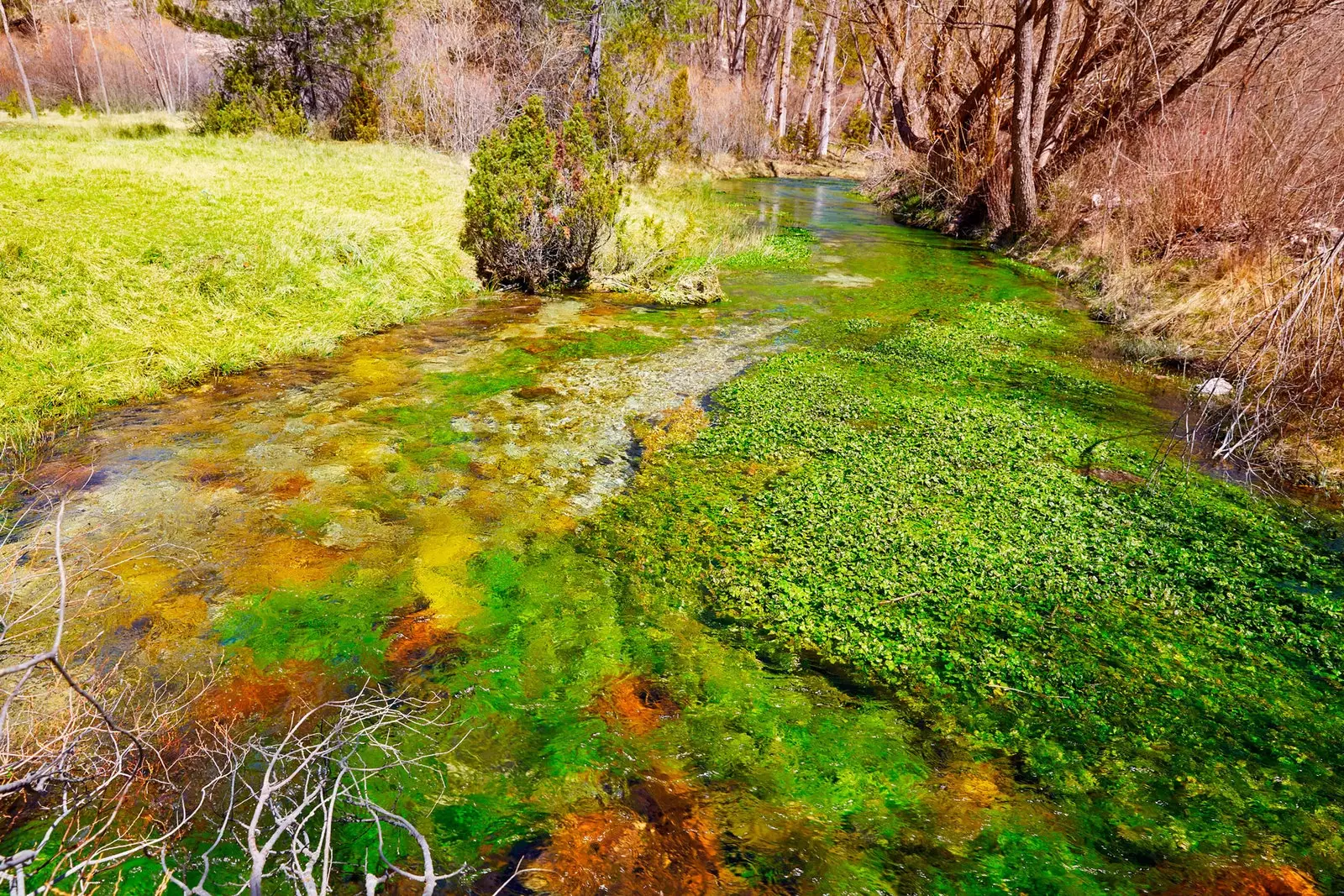
The Cabriel river as it passes through El Vallecillo, Teruel
On the banks of the river Cabriel, the pine forests and Mediterranean bushes are mixed with extensive fields of cultivation in which olive trees, almond trees and vines predominate.
The waters of the main tributary of the river Júcar travel, channeled in a torrent of extraordinary color and purity, along more than 200 kilometers that extend through the provinces of Teruel, Valencia, Albacete and Cuenca, before joining the old river Sucro – the name given by the Romans to the Júcar – in its mad race towards a salty death in the waters of the Mediterranean Sea.
No less than 52 municipalities, spread over the four provinces bathed by the Cabriel and in which only 20,000 people live, make up the Ribera del Cabriel Municipalities Association , a symbol of rural spain that, gradually and irremediably, is emptying.
However, rural tourism and the recent designation –by UNESCO– of the Cabriel Valley as a Biosphere Reserve appear on the horizon as a brilliant opportunity to stop a bloodletting that threatens to depopulate this area of the country.
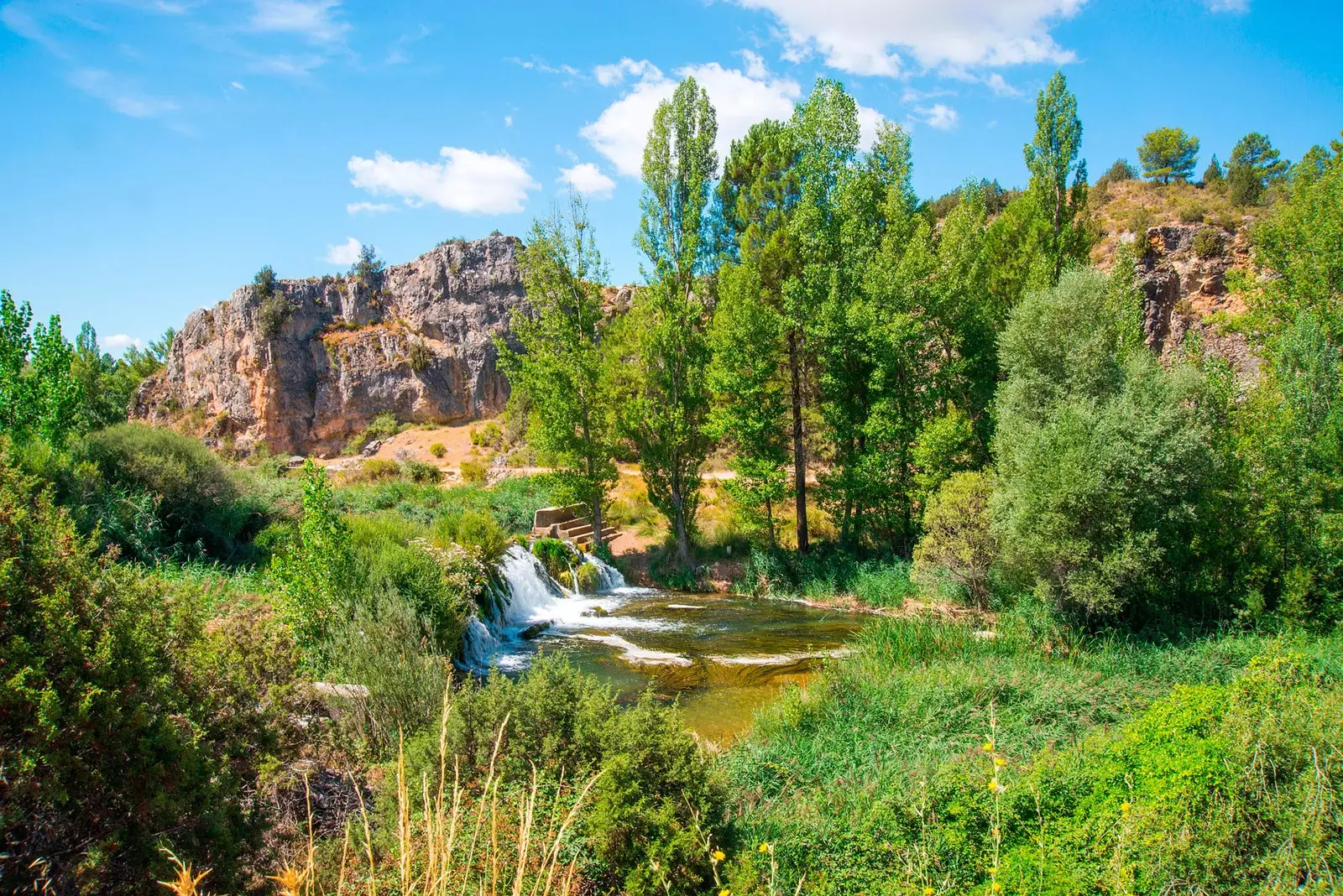
The waters of the main tributary of the Júcar River travel through the provinces of Teruel, Valencia, Albacete and Cuenca
UNESCO BIOSPHERE RESERVE
Its dense volume converts the Cabriel into an important hydrological reserve and source of life for the flora and fauna of the valley.
The landscape formed around the river, the purity of its waters –considered the best quality in Europe, due to the depopulation of its basin and the lack of economic activities that could impact it–, its important historical past –supported by important archaeological sites, such as the cave paintings of Villar del Humo, declared a World Heritage Site– and its biodiversity , led UNESCO to declare, in July 2019, the extension of Valle del Cabriel as Biosphere Reserve.
And it is that in the Valle del Cabriel, in addition to housing a very diverse vegetation, they inhabit birds of prey, mammals –like the elusive river otter– reptiles, amphibians and fish.
The people who are still anchored to these beautiful lands see this designation with hopeful eyes, being able to complement their increasingly meager agricultural and livestock earnings with income from growing tourism.
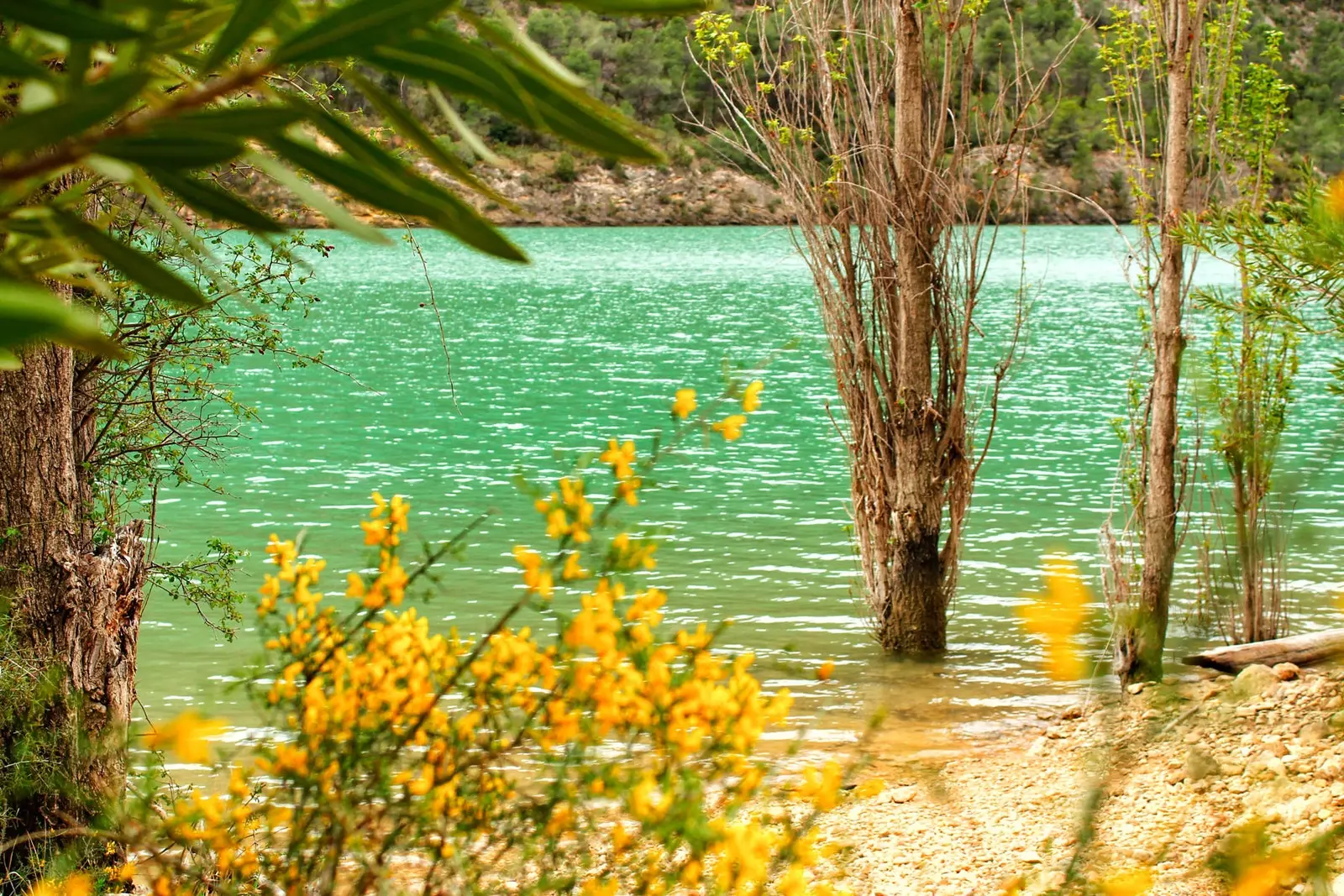
The waters of the Cabriel as it passes through Casas de Ves, Albacete
OUTDOOR ACTIVITIES
The Cabriel Valley is an ideal place for rural tourism, with all that it encompasses. A multitude of trails, with little slope and suitable for all audiences, They go through fields in which terraces of agricultural crops alternate with wooded patches –in which poplars, willows and white pines predominate– and the typical riparian vegetation, such as reeds, reeds and reeds.
Some of the busiest routes are The Sickle of Water (PR CU-50, 8 km), that of The Chorreras (PR CU-53, 13.5 km) and that of the four rivers (PR CU-54, 20 km).
Those who are looking for something stronger emotions can opt for activities such as a mountain bike tour (MTB CU-02) and the canyoning (in the National Monument of Las Chorreras). At the pinnacle of adrenaline-pumping adventures are two experiences ending in -ing: bungee jumping and rafting.
jump from a bridge located 30 meters on the blue waters of the Cabriel is something that can be done in the town of guide us . Something lighter is the subject of go down the river in an inflatable boat, since it does not have very demanding rapids.
For those who love nature, but are not very fond of great physical efforts, a bath in the fresh and clean waters of the Cabriel or bird watching is a good option. With patience and good equipment, they can be grateful for the fact that they are in an optimal area to observe **golden eagles, Bonelli's eagles and long-eared owls. **
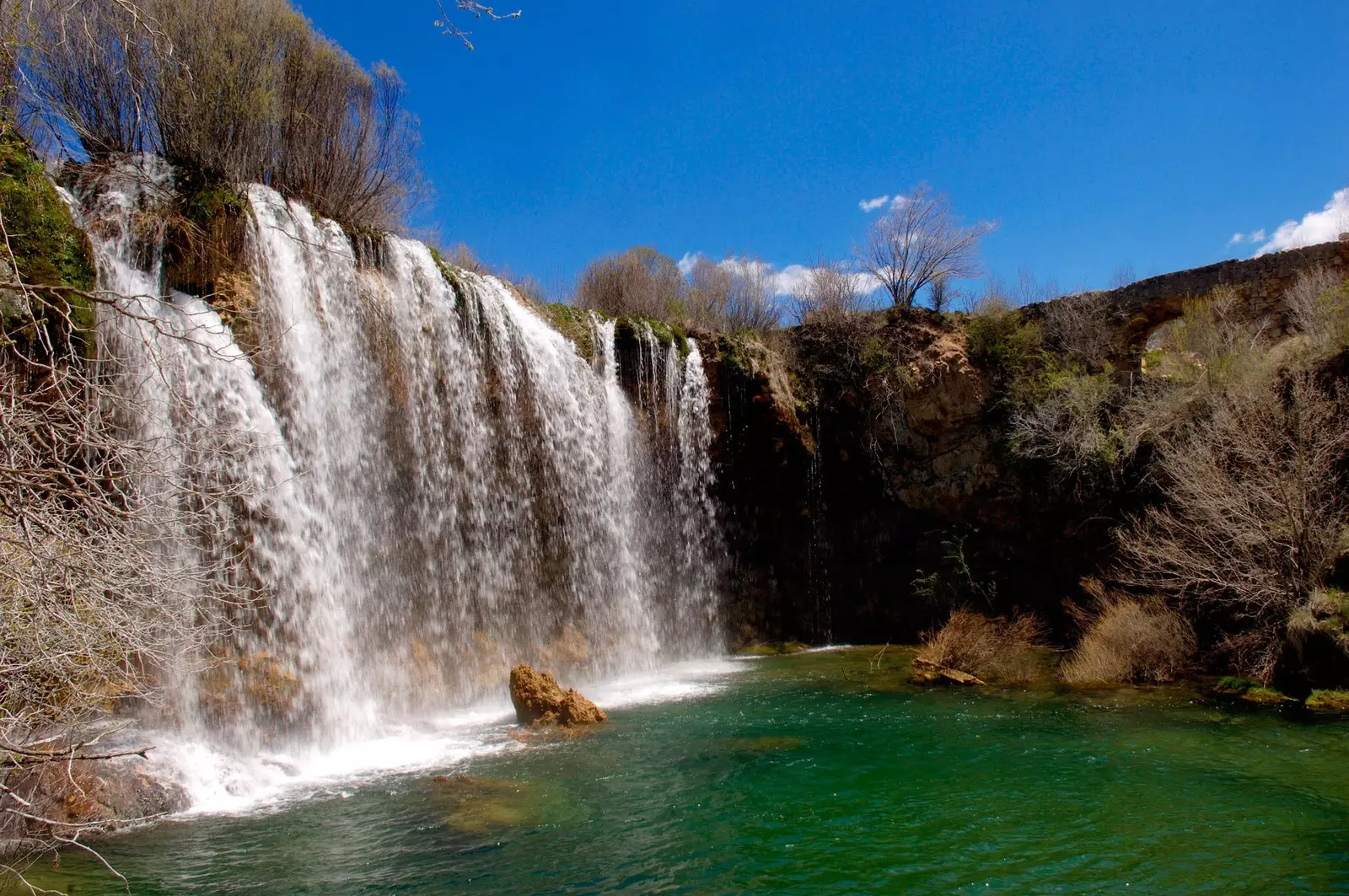
Cascada del Molino de San Pedro, in the Sierra de Albarracín
HOT SPRINGS AND RELAXATION
However, there is no greater relaxation in Valle del Cabriel than the one offered by some spas, such as La Concepción, close to the Albacete town of Villatoya.
Here, three springs provide waters, slightly alkaline and hard, at about 28 degrees, whose healing properties were certified by doctors in the mid-nineteenth century (although they had been used since the 18th century). Since then, people from different parts of Valencia, Castilla La Mancha, Aragón, and even Murcia, have come to the Cabriel spas to relieve the effects of chronic rheumatism and other conditions. **
Nowadays, finding ourselves in a society in which immediacy and vortex prevail, there are not a few who go to the Cabriel spas to get to relax in an enviable natural environment.
Thermal water circuits, saunas, Turkish baths, chromotherapy, hydromassages, ice fountains... These are just some of the relaxation options available.
GASTRONOMY
Another way of channeling relaxation is through gastronomy, and in the Cabriel Valley this is rich and varied. Typical foods of the area are the morteruelo, ajoarriero, gazpacho, migas, porridge, game dishes, stew, longanizas, black pudding or manchego ratatouille , being the tasty french toast, muffins, rolls (pan fried), apple fritters and different types of cakes included in the sweets section.
The restaurants Diana House (Alborea, Albacete) and House El Molí (Alcalá del Júcar, Albacete) are two good options to taste these wonderful gastronomic proposals.
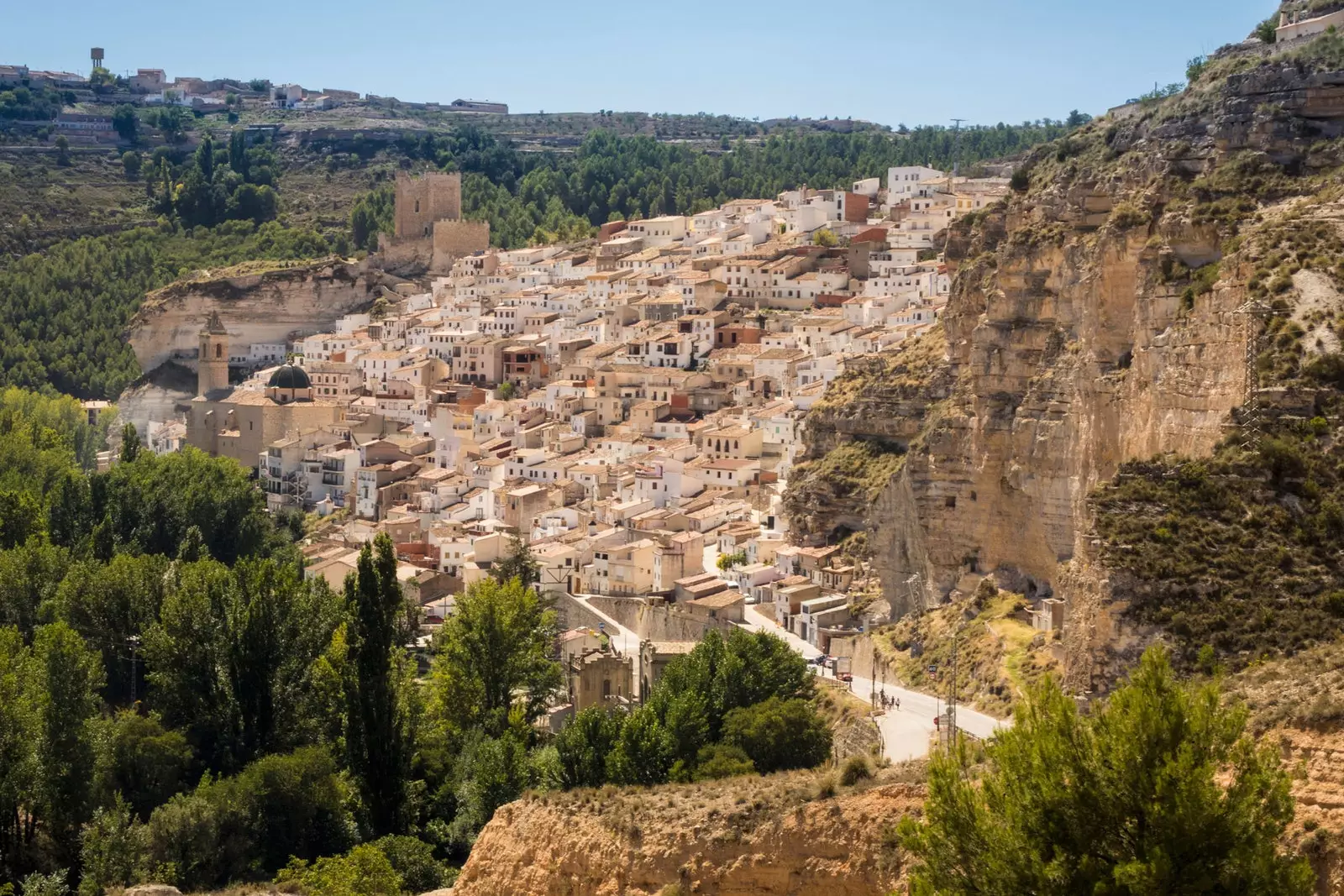
Alcala del Jucar
HISTORY AND HERITAGE
Alcalá del Júcar is precisely one of the most picturesque towns in the area, with its houses climbing, huddled together, by a meander that rises above the waters of the Júcar river. Its cobbled streets, old churches and that unique bullring in the world are some of its most striking tourist attractions.
Although there are also certain remains of Roman roads in the area, the most precious archaeological jewel of the Cabriel Valley is the cave paintings of Villar del Humo (Cuenca).
Just over thirty stations located on the calcareous walls of the Sierra of the Strings – dating from a period between 6,000 and 1,500 BC. of C.– show, in red, black and white colors, anthropomorphic and zoomorphic figures representing scenes of daily life of the time, such as hunting, gathering, war and dancing.
It seems, from these rock samples, that These beautiful places have been inhabited by man since Prehistory and that is when we must realize the drama of **that beautiful Spain that, little by little, empties. **
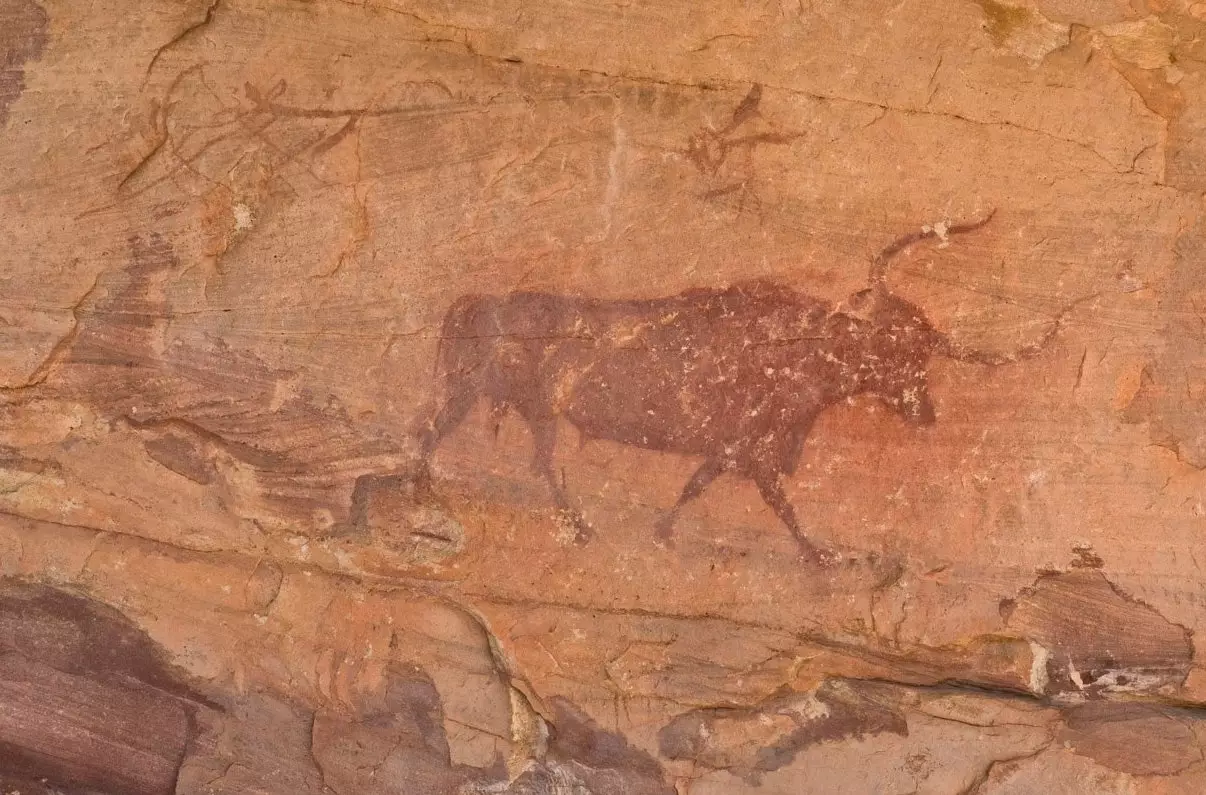
The cave paintings of Villar del Humo (Cuenca).
